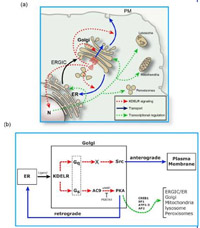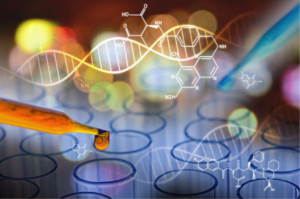16-17 novembre 2023 | CNR Area di Ricerca NA 1 .
Invia il tuo abstract entro il 3 ottobre.
per maggiori info www.mariaciaramella.it
From CNR website 11/02/2021 ore 16.00 – 18.00 Liceo Statale Alessandro Manzoni V. A. De Gasperi Caserta “Una Scienza più inclusiva” è il tema che verrà affrontato giovedì 11 febbraio 2021 insieme agli studenti e al corpo docente del Liceo Statale A. Manzoni di Caserta nell’ambito della Giornata Internazionale delle Donne e Ragazze nella scienza. L’incontro,…
Read MoreInternal seminars
May: 25
June: 8
External seminars
June: 22
Sept: 27
go to seminars page for more information
Read MoreIntracellular signaling and trafficking in cancer and rare diseases.

Several cell biology groups at the IBBC have traditionally worked in two related areas of cell biology, namely, signal transduction and intracellular membrane transport. The general objective is to investigate at the molecular level basic biological processes and exploit this knowledge to design novel drug-based therapies, and novel diagnostic approaches, in the fields of cancer and rare diseases. Specifically, the main research areas of these groups are:
• Metabolism of the glycerophosphoinositols and of phosphatidic acid, G-protein-coupled receptors, and the ADP-ribosylation reaction; the general aim is to elucidate the cellular regulatory mechanisms that, when defective, lead to rare diseases and cancer.
• Investigation of the organizational principles and regulation of intracellular cargo transport and organelle structure; development of the required cellular models and technologies (including imaging, systems biology, bioinformatics and modeling approaches); pharmacological approaches for cancer and other diseases related to membrane transport.
• Development of advanced optical technologies based on Raman Spectroscopy and Mass Imaging to provide novel procedures for label-free characterization of single cells and single molecules.
The 2020 STEM Discovery Campaign is a joint international initiative organized by Scientix that invites projects, organisations, libraries, schools, universities and youth clubs across Europe and around the world, to celebrate careers and studies in the fields of Science, Technology, Engineering and Mathematics (STEM). The tagline for this year’s campaign is “Innovative Trends in Education”.…
Read Moreidentification and use of natural substances
While modern medicine is focused on overcoming diseases of genetic, age-associated and life-style origin, the emergence of new viral pathogens and antibiotic resistant bacteria have opened a new frontier. The interests of several groups at IBBC lie  in the development of cellular model systems that recapitulate the pathology of these diseases, using these systems for understanding the molecular basis of pathogenesis as well as for developing potential therapeutic interventions that can be translated to the clinic. The major diseases that are being studied include Cystic Fibrosis, Wilsons disease, congenital disorders of glycosylation, cancer, metabolic and neurological diseases, and viral infectious diseases.
in the development of cellular model systems that recapitulate the pathology of these diseases, using these systems for understanding the molecular basis of pathogenesis as well as for developing potential therapeutic interventions that can be translated to the clinic. The major diseases that are being studied include Cystic Fibrosis, Wilsons disease, congenital disorders of glycosylation, cancer, metabolic and neurological diseases, and viral infectious diseases.
The different groups also have strong collaborations with industries including Dompé and, together with the chemo-bioinformatics facility at the IBBC in Naples, aim at identifying and developing small-molecule-based therapeutic strategies for pharmacological interventions.
Generation, cryopreservation and phenotyping of murine mutants model of human diseases, Infrafrontier-Emma European infrastructure

CNR has established and developed at the A. Buzzati-Traverso Campus in Monterotondo the European Mouse Mutant Archive (EMMA) Core Structure and Monterotondo Mouse Clinic (MMC), as advanced international infrastructures for the life sciences, in collaboration with the leading, European and extra-European biomedical research Institutions. The EMMA Core Structure and MMC are devoted to large-scale, standardized production, primary and specialized phenotypic analysis, cryopreservation and dissemination of novel murine mutant models of human diseases with their bioinformatics resources.
The EMMA Core Structure and MMC are essential component of the INFRAFRONTIER network infrastructure, a Landmark Project of the European Strategy Forum on Research Infrastructures (ESFRI) Roadmap and a selected project of the Italian Ministry of Research’s Roadmap and National Programme on Research Infrastructures (PNIR). CNR-EMMA, Monterotondo is the Italian co-founder and partner of INFRAFRONTIER.
imaging and microscopy, biosensors, European Eurobioimaging infrastructure

The Bioimaging group is interested in developing novel imaging methods to visualize processes of life at the cellular level.
Specifically, we are interested in imaging protein-protein interactions and metabolites, especially lipids.
The methods for visualization range from classic fluorescence and electron microscopy to modern correlative light-electron microscopy and super-resolution microscopy.
molecular, cellular and behavioral aspects, neuropathologies and aging

Researches focus on mechanisms regulating brain functional states under physiological and pathological conditions in cells and mouse models. Main themes include the study of development and plasticity, emotionality, movement disorders, learning and memory, response to acute and chronic stress and pain, central control of energy homeostasis and reward, depression, aging and neurodegeneration, brain tumors. The role played by mouse genetic background, neurogenesis, microbioma, hormonal, neuroimmune systems, LncRNA/miRNA-mediated regulation and neurotrophins are investigated. Genetically manipulated animals and cellular models are used to clarify the role of genes in neural stem cell control and in different pathologies related to CNS and PNS functions. Transcriptomic and proteomic analyses are carried out, in order to identify new target molecules involved in physiological and/or pathological processes. Molecular, histological and behavioral characterizations provide tools to detect pathological conditions and evaluate rescuing strategies, in a translational perspective.
Read More